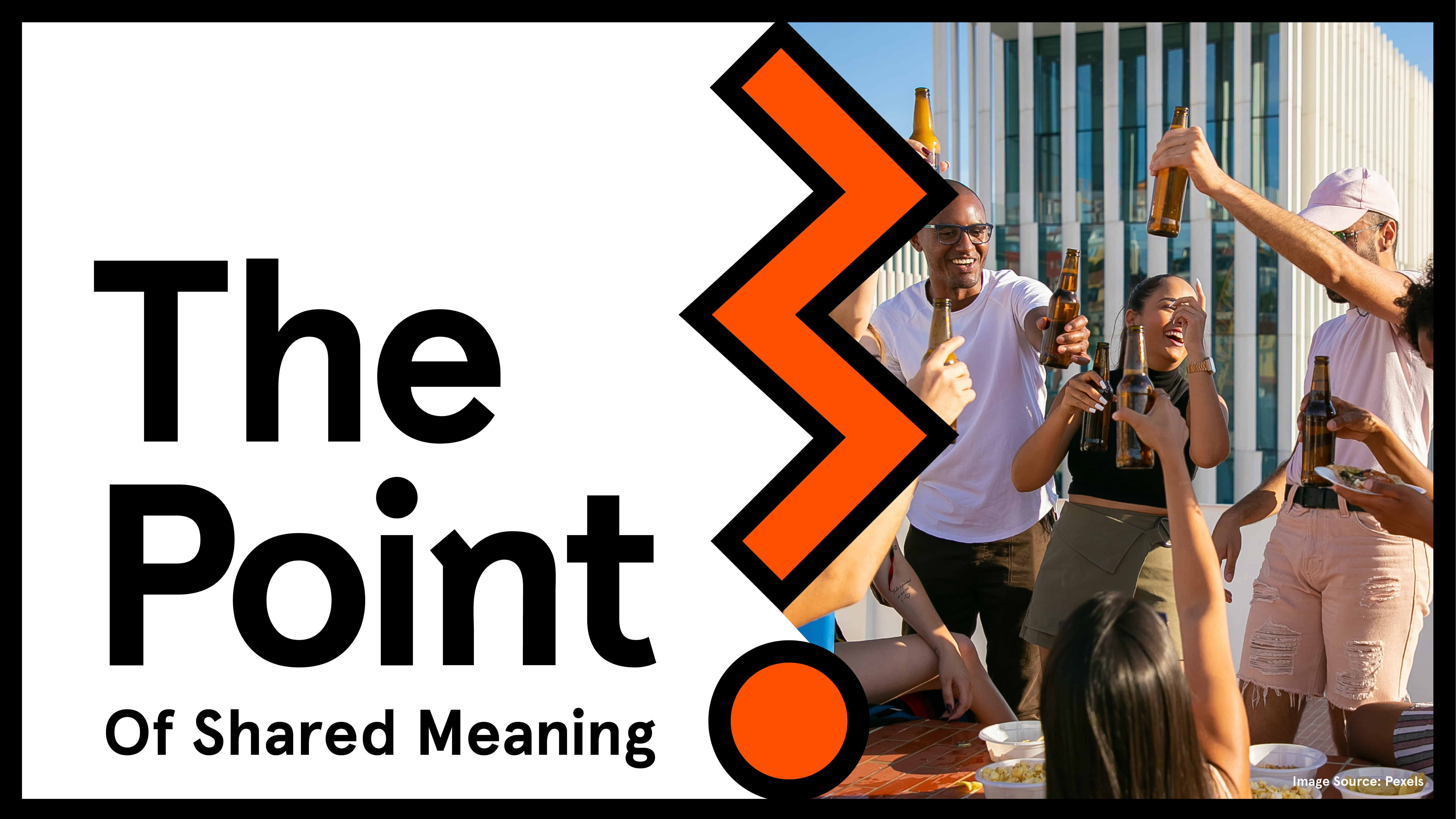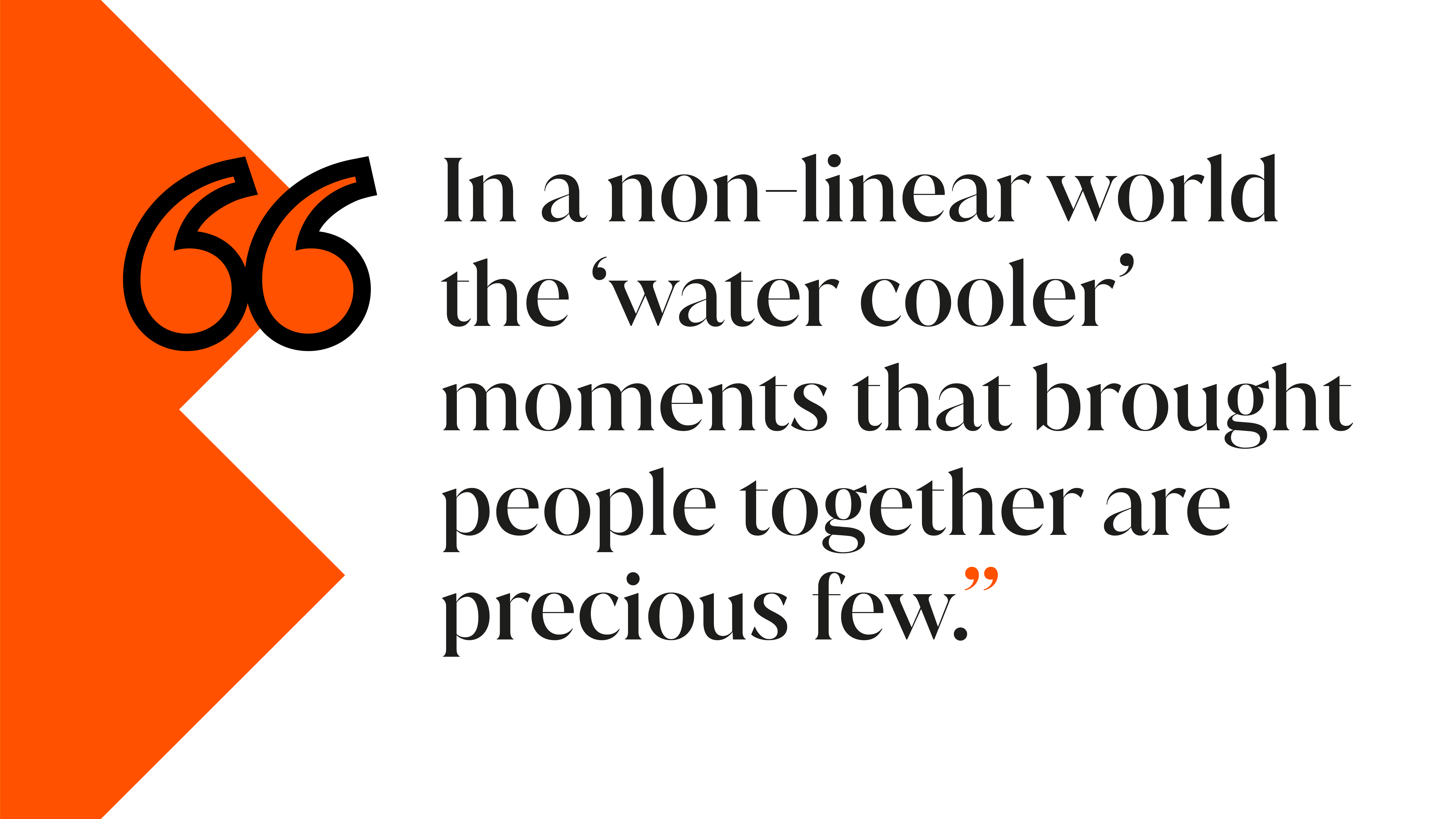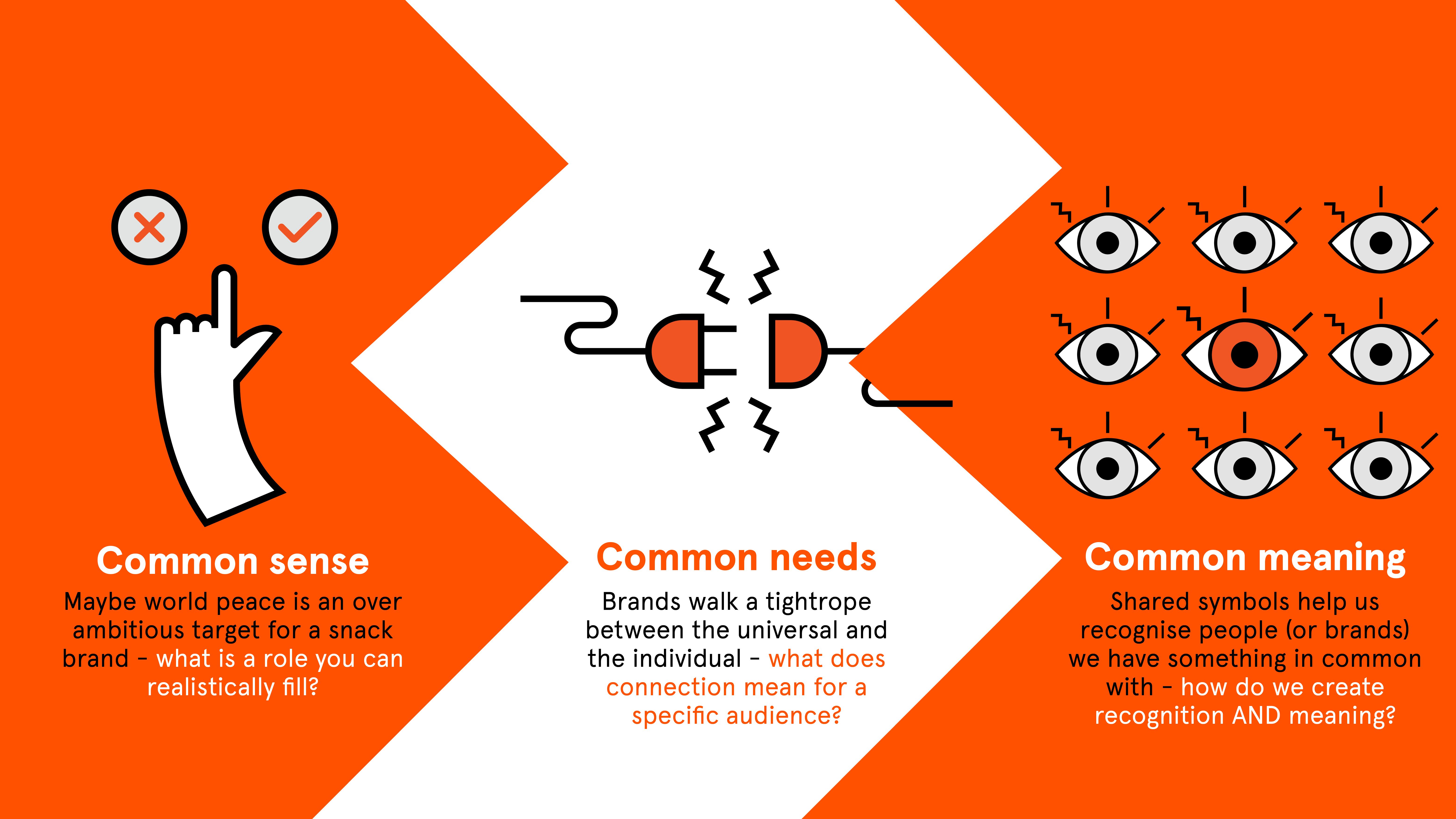Get to The Point of connected and meaningful brands and why they’re so important in our increasingly fragmented world.
The Point

A Fragmented World
It can feel exhaustingly like we live in an age of division and polarisation. Social media networks amplify dissenting voices with algorithms that recognise anger means engagement, especially when brands take sides in divisive cultural warfare. In a non-linear world the ‘water cooler’ moments that brought people together are precious few.
Category after category is being torn apart by the digitally enabled long tail of new entrants - think of the proliferation of craft beer and gin brands. Brand loyalty, so we’re told, is a thing of the past in a new transactional age.
For all the structural fragmentation of media and society, human beings still have a fundamental need to connect and belong, one that was put into sharp relief by the enforced isolation of lockdown.

Connection and Togetherness
The desire for connection is more than a response to current affairs - it’s fundamentally human. Robert J. Waldinger, Harvard professor of psychiatry and current Director of the world’s largest longitudinal study into happiness, identifies the quality of relationships as a profound driver of health and happiness [1]. No surprise then that a Fleishmann Hillard study showed 61% feel brands have a role promoting ‘togetherness’ [2].
Brands can’t have a unifying effect unless they have a unity of meaning and expression themselves. Like any group, brands need their symbols - their flag or style or secret handshake.
Scale can differ. Rapha creates a shared space for cyclists, whilst Amazon’s GoodReads is effectively a global book club.

What’s The Point?
Maybe world peace is an over-ambitious target for a snack brand - what is a role you can realistically fulfil?
Brands walk a tightrope between the universal and the individual - what does connection mean for a specific audience?
Shared symbols help us recognise people (or brands) we have something in common with - how do we create recognition AND meaning?

What We’ve Done
Molson is a beloved beer brand in Canada. That’s its superpower and its issue. In a country where geography, history and language create multiple identities, how can one beer brand bring people together.
The history of Molson Canadian and its identity has been based around a material symbol: the maple leaf. But the Canadian landscape has changed. Unlike the US, Canada isn’t striving to be a melting pot, but rather a country that is united through differences.
To reflect this change, we created a mosaic that gives the brand the ability to connect all people, as they are.